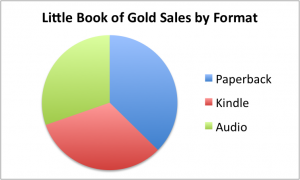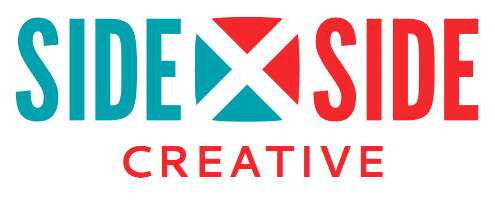Ask An Author: Should I Produce an Audiobook?
 By Erik Hanberg
By Erik Hanberg
For the last four months, I’ve had my non-profit fundraising guide for sale as an audiobook on Audible and iTunes. The decision to put it there was a bit of an experiment, and I’m happy to report that it’s gone quite well.
Sales Report
After four months of sales, I’ve paid for the upfront production costs of the book, which is–quite honestly–much faster than I expected.
It’s been a high percentage of sales too. Since I do love making charts and graphs, here’s the last four months of sales of the book, by format.

As you can see, the paperback is the most frequently sold format, but not by much. Followed by Kindle, then audiobook. But it’s pretty close to even thirds.
Perspective authors take note! This mix is very unusual for an independent author. Most self-published authors sell hundreds of ebooks for every paperback, and that’s been true for my fiction. I very rarely ever see paperback sales of The Saints Go Dying or The Marinara Murders. But The Little Book of Gold is aimed an audience that is not as likely to have Kindles. Or, even if they do have Kindles, it’s a book that the reader is more likely going to want to pass around and share after they read it. So paperback sales have been high.
Audible’s Bounty
One of the Audible surprises I’ve come to really enjoy is their “Bounty” program. On the second check I got from Audible, I received an extra $75. This was very confusing. What did I do to earn a free $75? My book was one of the first three downloaded books for a new Audible subscriber! 3 times, each time earning me $25. Audible has a variety of membership programs, where for a flat monthly fee, you can buy one (or more) audiobooks a month, usually for much less than the listing price. Audible assumes that the first few books must have been a lure to get someone to sign up, and rewards each of them with $25.
I’ve since had 6 bounties, or a free $150.
Judging from some comments by other independent authors, that too is higher than normal (as a percentage of sales), but makes sense when you consider the target reader: nonprofit professionals. And who are the biggest consumers of audiobooks? Professionals who are commuting to and from work. Learning about fundraising while commuting to work might be just the thing to encourage someone to sign up for a new service.
What’s Next?
I’m glad that my decision to take a leap with an audiobook has paid off. I plan to get all my books onto Audible eventually, but I’m not expecting the fiction to enjoy the same kind of numbers. Maybe I’m wrong! This whole process has been an experiment, and I’m constantly learning new things.
This post was cross-posted from ErikHanberg.com
